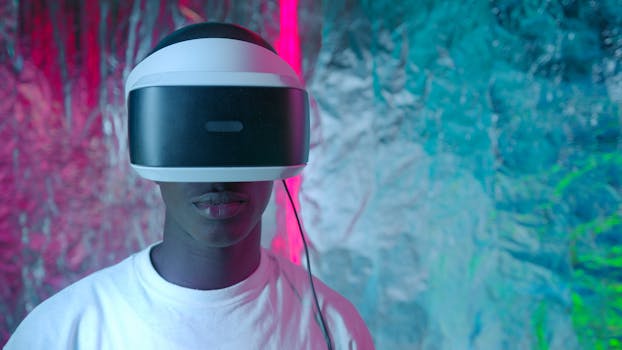Watching a movie, joining a concert from afar, or experiencing your favorite game feels different now. That’s because new technologies quietly shape the way entertainment is designed and enjoyed by all of us.
Designers use digital building blocks — like AI or AR — to create experiences that feel alive and personal. This shift matters because it turns entertainment into something more engaging, collaborative, and even unpredictable.
Let’s walk through how new technologies are changing entertainment design right now. You’ll see examples and get practical takeaways for how to spot, use, or even build on these dynamic changes yourself.
Immersive Environments: Raising Audience Expectations Through Interaction
When you step into a digital world that feels reactive and alive, it’s likely powered by new technologies. Immersive environments are quickly shifting the boundary between audience and experience.
Sophisticated graphics engines and sensor-driven feedback loops encourage audiences to move, look around, and engage. The days of passively watching a screen are giving way to environments that adapt as you interact.
Spatial Computing Drives Deeper Engagement
With spatial computing, devices detect body movement and gestures. When you walk through a 3D art exhibit using VR, new technologies track you and reshape the scene based on your location and actions.
This creates a feedback loop — the more you explore, the more personalized and surprising the virtual world becomes. Curiosity is rewarded, just as in a real-life scavenger hunt.
For creators, spatial computing means designing environments that listen as much as they speak. Every step, glance, or gesture becomes meaningful data.
Augmented Reality Blends Real and Digital Elements
Augmented reality overlays digital content onto the physical world. Using a phone or smart glasses, you might see a dinosaur roam your living room or information labels on a city tour.
This blend of real and virtual, all powered by new technologies, lets creators offer layered experiences. Imagine learning about space while pointing your device at constellations overhead or playing chess on your kitchen table with projected pieces.
AR’s instant feedback turns static places into interactive playgrounds. The design must carefully balance clarity and surprise, making digital content feel integrated and meaningful.
| Technology | Interaction Type | Key Benefit | What to Try Next |
|---|---|---|---|
| Virtual Reality (VR) | Fully Immersive | Complete sensory transport | Attend a VR concert |
| Augmented Reality (AR) | Overlay on Reality | Contextual, on-demand info | Play a location-based AR game |
| Motion Sensors | Gesture Recognition | Natural input, physical feedback | Try interactive art installations |
| Audio Spatialization | 3D Audio Environments | Immersive, dynamic soundscapes | Use spatial audio headphones |
| Touch Haptics | Tactile Feedback | Realistic touch interactions | Experience haptic games or VR gloves |
Personalized Experiences: Turning Data into Unique Entertainment
Customized entertainment now feels tailor-made, and new technologies are the reason. Algorithms learn about preferences, habits, and even moods to serve up truly individual experiences.
This level of personalization comes from harnessing user data — what you watch, play, or even say to virtual assistants. As a result, platforms feel more like companions than simple tools.
Data-Driven Recommendations Shape Daily Choices
Modern streaming apps rely on new technologies to analyze every click, pause, or thumbs-up. They use this feedback to surface movies or music you’ll probably enjoy, even if you didn’t know they existed.
- Seek out recommended playlists or watchlists after rating a few favorites. Algorithms respond by fine-tuning picks just for you, which makes discovery fun and serendipitous.
- Enable user profiles for each family member. Content suggestions become more accurate because data isn’t mixed between different tastes or age groups.
- Override recommendations intentionally to surprise the algorithm. Choosing something outside your pattern shifts future results to be more adventurous and varied.
- Review your viewing or play history periodically. This practice helps you see how your preferences evolve and can spark new interests when suggestions feel stale.
- Set explicit limits or filters for genres you want to avoid. This proactive approach ensures the technology’s suggestions lean in your preferred direction, not just what’s popular.
Consistent interaction lets new technologies get smarter, rewarding you with more relevant entertainment every time you return.
Adaptive Storytelling Shifts the Narrative
Some games and apps now adapt the story based on your actions. Imagine a detective story that remembers each clue you find and changes the ending accordingly — that’s dynamic entertainment in real time.
- Choose narrative-driven games or apps with branching storylines. These let you try different decisions and see how the plot evolves, giving replay value and a sense of agency.
- Look for shows with interactive elements, where you can vote on the next scene or outcome. Your participation steers the narrative, incorporating your voice directly.
- Track your choices within these experiences through in-app logs or summaries, learning how the story shifted based on your input — this approach encourages reflection and experimentation.
- Invite friends or family to participate. Collective decision-making highlights how groups influence dynamic outcomes, sparking debate and replay sessions to try alternate paths.
- Give feedback on endings or story branches. Developers rely on this to learn which paths resonate, making new technologies even more responsive to audience demand.
When narratives are shaped by user input, each entertainment experience becomes unique — and new technologies ensure the creative loop stays fresh.
Real-Time Collaboration: Designing Shared Entertainment Moments
Real-time collaboration tools let audiences become co-creators in entertainment, not just spectators. Through new technologies, people can create music, art, or even stories together, regardless of location.
This dynamic shifts how entertainment gets made and enjoyed, turning passive consumption into active, shared events that are always evolving.
Live Multiplayer Games Deliver Social Energy
Online gaming platforms use new technologies to connect players instantly. Voice chat, live events, and instant updates build a sense of teamwork and fast-paced fun that can’t be scripted.
The thrill comes from collaborating with real people who can improvise and surprise you, just as in a pickup basketball game or collaborative cooking session.
Game designers now plan around these live interactions, offering tools for coordination, competition, and group creativity.
Co-Creation Platforms Empower Fans and Artists
Interactive music or art apps invite users to remix, layer, and build upon each other’s work. New technologies manage the complexity of syncing audio, visuals, and feedback across devices.
This blurs the line between creator and audience. For example, fans can submit video clips or audio to become part of a global concert, experiencing their unique voice within a larger tapestry.
Real-time feedback and community ratings let creators adjust and improve together. These platforms thrive when every contribution is acknowledged and woven in, making collaboration a living process.
Interactivity on Demand: Empowering Users to Change the Experience
Interactivity is no longer a bonus; it’s an expectation. New technologies enable audiences to tweak, remix, and even build content, putting the power for change directly into their hands.
This shift values playful experimentation and empowers users to take ownership of their entertainment, moving beyond preset scripts and choices.
Toolkits for User-Generated Content Simplify Creation
User-friendly toolkits give everyone a shot at creating. From designing new game levels to editing short films, new technologies handle the technical heavy lifting, letting imagination lead the way.
The best platforms offer instant previews, drag-and-drop features, and built-in sharing. This support lowers barriers for entry, inspiring experimentation and remix culture.
Communities built around these tools thrive on support and feedback, turning every user into a potential collaborator or mentor, regardless of background or skillset.
Interactive Streams Blend Participation and Performance
Livestreams now come with polls, emoji reactions, and branching options. Audiences can steer the show — voting on which song to play next or which route a streamer should take in a game.
For streamers, this dynamic keeps shows unexpected and engaging. Viewers become invested, knowing their input drives real-time outcomes.
New technologies coordinate thousands of inputs, making every session feel alive and communal rather than one-sided or pre-scripted.
Seamless Integration: Connecting Devices for Unified Entertainment
Unified entertainment often means you can start an experience in one place and continue it anywhere. Thanks to new technologies, devices and services now communicate behind the scenes to keep everything in sync.
From cloud saves to synchronized playlists, seamless integration helps audiences relax and enjoy — no tedious setup or data loss.
Cloud Connectivity Keeps Content Accessible
When you pause a game on your console and resume on your phone, that’s new technologies at work. Cloud syncing keeps progress, settings, and preferences always current, regardless of device.
You no longer worry about losing your place or missing content. This boosts engagement by making sure entertainment fits busy lifestyles without sacrifice.
Even collaborative projects benefit: cloud-based editing tools let musicians, writers, or video creators work together, review changes, and publish from anywhere in the world.
Smart Home Devices Enhance Shared Experiences
Smart speakers, lighting, and displays now respond to entertainment cues. Dim your lights for movie night or sync your music across rooms — all triggered by a single voice command or app tap.
This seamless control lets users set the scene effortlessly, heightening immersion and making group experiences richer. Adaptive lighting or spatial audio shifts entertainment from the background to the main event.
New technologies also let friends join from afar, syncing video calls or playlists. Shared experiences don’t stop at the threshold; the entire home becomes a collaborative space.
Adaptive Design: Entertainment That Responds to You
Modern entertainment adapts itself to your context, interests, and even energy level, thanks to new technologies. This responsiveness keeps experiences fresh and relevant, supporting different moods, schedules, or accessibility needs.
As environments, interfaces, and narratives learn from your input, they evolve in real time, blurring the line between design and audience.
Dynamic Difficulty and Accessibility Support Inclusion
Games and apps now monitor user performance and adjust difficulty accordingly. If you breeze through a level, obstacles rise; if you struggle, hints appear more frequently. This maintains a satisfying challenge without frustration or boredom.
Accessibility features — such as audio descriptions, customizable controls, or colorblind modes — are built in, rather than added as afterthoughts. New technologies make it simple for everyone to participate fully and comfortably.
By dynamically adjusting to individual needs, adaptive design helps people stay engaged longer and discover new skills organically.
Environmental Responses Create Emotional Links
Some smart environments gently shift mood or energy based on real-time signals. For example, music tempo might quicken as you exercise, or lighting could soften to match a movie’s mood.
This degree of adaptability depends on sensors and algorithms, but the goal is always emotional engagement and comfort — a living space that feels attentive, not intrusive.
Users can personalize responses, teaching new technologies what works best. The payoff is entertainment that feels truly tuned to your life and rhythms.
Conclusion: Embracing Dynamic Entertainment by Engaging with New Technologies
The design of entertainment experiences grows more vibrant and personalized every year due to new technologies. From interactive stories and immersive worlds to collaborative creation and adaptive environments, each advance expands what’s possible for creators and audiences alike.
By participating, experimenting, or even building with these tools, you claim an active role in shaping the future of entertainment. These dynamic shifts are not just technical — they’re cultural, changing both how we connect and what we expect from every show, game, or event.
Jump in, try something new, or share your voice. As new technologies continue to evolve, your participation helps create the next generation of unforgettable entertainment experiences.



